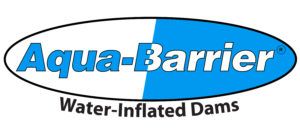How to Read a Flood Plane Map
A Flood Plane Map contains valuable information that is pertinent to industries such as oil and gas, construction, Pipeline construction, as well as industrial construction. Flood Maps may incorporate these jurisdictions: Counties, Townships, Towns, as well as Cities. FEMA allocates each a six-digit Community Identifier (CID).
There are two common types, Flat Flood Maps and Z-Fold Flood Maps. The flat flood map includes one, sometimes more, 11”x17” pages, while the Z-Fold Flood Map is larger and folds up as a road map commonly would. Every flood map has the basic essentials, including the index map, panel, title box, legend and standard symbols that remain consistent from map to map. Regardless of what kind of map is being used, most will only cover one jurisdiction at a time.
Flood Map Overview.
The Index: acts as a guide to map sheets found on a Flood Map. As the geographic coverage of a Flood Map is often quite huge, FEMA splits the range into segments named panels.
The Panel: The Community might contain more than one individual maps. Each map is a panel.
The Title Block: Available on each Panel (or page), and the community name, date, the panel/page number.
Community Name: The title block portrays name of the mapped community, the county, and the state.
Community Number: the community identification number (CID), allocated to the mapped community.
The Body: Presents the map contents. Within the body, there are places of reference to pinpoint specific locations.
Corporate Limit or County Line: identifies the jurisdictional boundaries of the community’s regulatory authority over constructing or land development.
The Legend: Z-fold Flood Maps, the Legend features data for determining the risk zones and/or floodway on the Flood Map.
North Arrow: This arrow orients the Flood Map.
Panel Limit Line: outlines the section covered by each panel presented on the index.
Flood Maps possess flood hazard data on one or more communities. Before beginning any project or development, a company may need to identify Special Flood Hazard Areas (SFHA) or undeveloped coastal barriers, wherein flood insurance is not available. Businesses, organizations or individuals concerned with flood control will also find flood maps valuable.
Contact us for more information about your Flood Control and Dewatering Projects.


